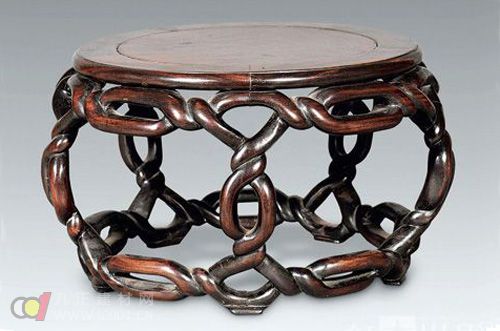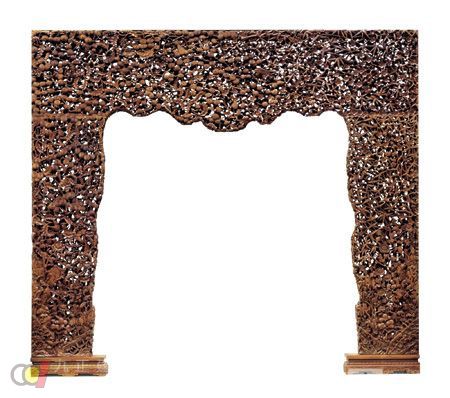Nowadays, with the shortage of top wood such as huanghuali and red sandalwood, the trading heat of other high-grade hardwoods is gradually heating up. The “grass pear†we often call it is one of them. However, "grass pear" is a complex concept. It has different meanings in different time and space backgrounds... Grass pear, a name that can be heard in the major mahogany furniture stores. However, as a general, unclear name, it is easy to be confused about "grass pear": What kind of wood does this title mean? What does it have to do with "huanghua pear" and "rosewood"? What is the meaning of the meaning of "grass pear" in different historical periods? Knowing these questions is undoubtedly very important for the current Redwood consumers. Because in the mahogany furniture market, which is fascinating, if you don’t know the title of “grass pearâ€, you may fall into the trap of deception and spend a lot of money to buy furniture that is not worthy of the name. Picture: clear pear wood inlaid eucalyptus The History of "Grass Pear" What is the name of "grass pear"? After the trace of the roots, it is not difficult to find that the title of "grass pear" is the collective name of several kinds of wood for the sake of convenience. Its appearance is closely related to Huanghua pear. During the late Qing Dynasty and the Republic of China, Hainan huanghuali was almost cut down. In addition, the national strength was declining at the time, and the import of the same valuable wood (such as sandalwood rosewood) could not be reached. In this case, the grass pear was introduced into the furniture making as a supplement to the yellow pear. Therefore, in the late Qing Dynasty national wares of the world, the number of furniture of the grass and pear is considerable, and the huanghuali furniture is rare. According to the situation of grass pears used in the history of the country, such as the grass and pears in the Forbidden City and other wood used for decoration, and the detection and analysis of the old house materials and old furniture pieces in Hainan Island, the title of “grass pear†is the main name in history. Including two types of wood, one is large fruit rosewood (commonly known as Burmese rosewood), the other is Indian rosewood (commonly known as rosewood, rosewood), "Redwood" national standards have included them in the category of redwood. From this, it can be seen that “Grass Pear†has not been the title of wood since the day of its birth, but a general term for several kinds of wood. In the late Qing Dynasty and the Republic of China, "grass pear" mainly refers to two kinds of wood: big fruit rosewood and Indian rosewood. In addition to these two kinds of wood, through the analysis of the furniture left over from the late Qing Dynasty, the more Cambodian red sandalwood and the bird foot rosewood are also used. The current confusion of "grass pear" Nowadays, the meaning of "grass pear" in the market is very different from that of the late Qing Dynasty. After the introduction of the 2000 "Redwood" national standard, the range of grass pears became more broad, and seven kinds of wood in rosewood rosewood, including big fruit rosewood, Indian rosewood, Vietnamese rosewood, Amanda rosewood, hedgehog rosewood, Both sacred red sandalwood and bird foot rosewood are titled as grass pear. The main reason is that these woods have larger brown eyes and coarser wood than the yellow pears, which are basically the same as the definition of grass pears in the late Qing Dynasty. Since then, the definition of "grass pear" has changed in different regions. In the northern market, the grass pears refer to Burmese rosewood. In the Dacheng area of ​​Hebei, the rosewoods produced in Laos, Myanmar, Vietnam and Cambodia are collectively referred to as turf pears, while in some places, the pears are called turf pears. As the name suggests, Asian pears are better than rosewood, not as much as rosewood. They are the collective name of rosewood rosewood that is not in the category of redwood. These woods are most commonly found in African rosewood (Indian red pear) and Angola rosewood. In addition, there is also a kind of ancient Yi Su wood, commonly known as Brazilian rosewood, and some places also known as grass pear. It can be seen from the above analysis that the pears are different in different time and geography, and they are very random and irregular. For manufacturers and furniture stores, the name is obviously lacking in professionalism. Sex. Even some unscrupulous merchants use this name to confuse the audience, deliberately put some non-redwood materials on the mahogany to increase their prices and deceive consumers. Therefore, when consumers purchase furniture, they must clearly understand the scientific name of the furniture materials, and indicate the name of the standard when signing the contract. It also calls on manufacturers, sellers and consumers to actively promote and use the standard name of wood in order to regulate the market and safeguard consumer rights. Spring of rosewood On the level of nobility, large fruit rosewood and Indian rosewood are less than rare wood such as rosewood, sandalwood and sandalwood. There are two main reasons for this. Figure: clear pear wood embedded treasure flower bird figure pen holder 1. Historical and cultural factors. These two kinds of wood, although used in large numbers in the Qing Dynasty, are traced back to the source, and the use history is not as long as the fragrant Dalbergia and sandalwood rosewood. Moreover, the scented rosewood and sandalwood rosewood became the king's wood in the Ming and Qing dynasties respectively. After the top-down imitation, these two kinds of wood have possessed cultural attributes. For example, Huanghuali furniture is regarded as literati furniture, and rosewood furniture is the representative of court furniture. 2. Scarcity. Nowadays, the scarcity of Dalbergia and sandalwood rosewood is well known, especially the scented rosewood, which was almost cut down as early as the end of the Qing Dynasty. The large fruit rosewood and Indian rosewood are introduced late, and the yield is quite abundant. As the saying goes, things are rare. These two kinds of wood are not "rare" and naturally not "expensive." Photo: Qing Qianlong rosewood floor cover For the above reasons, Daguo red sandalwood and Indian red sandalwood are still difficult to divide the autumn wood with the rare wood such as scented rosewood and sandalwood rosewood. However, the value of these two types of wood cannot be denied. Think about it from another angle. In today's market landscape, the mahogany furniture market needs to maintain the diversity of wood. There are cutting-edge woods such as scented rosewood and sandalwood rosewood, as well as high-end wood such as large-flowered red sandalwood and Indian rosewood, and even some low-end non-hardwood wood, so as to build a healthy and stable traditional furniture. market. More importantly, furniture cannot be materialized. This is a misunderstanding that is common among many classical furniture consumers. "Shaping, art, rhyme, material" is the four criteria for judging whether a piece of furniture has value. In the order, it can also be seen that the first criterion for determining the value of furniture is the shape, and finally the material. Therefore, in this sense, as long as the shape is beautiful, the proportion is coordinated, the rhythm is elegant, and the craft is exquisite, even the rosewood furniture has a collection value. The price of rosewood has been rising in recent years, furniture prices are also rising, and sales are very impressive. The number of excellent Ming or Qing style furniture made with fine rosewood in history and today has not been able to attract the attention of the collectors and academic circles. However, the situation has been improved. Many ancient rosewood furniture have been collected by people. The fine products have also entered the auction and furniture exhibitions, especially the rosewood furniture with an orderly and historical and cultural value is more collectible. Wave Springs,Stainless Wave Springs,Alloy Wave Springs Compression Springs ,Stampings,Extension Springs Co., Ltd. , http://www.ns-springs.com

